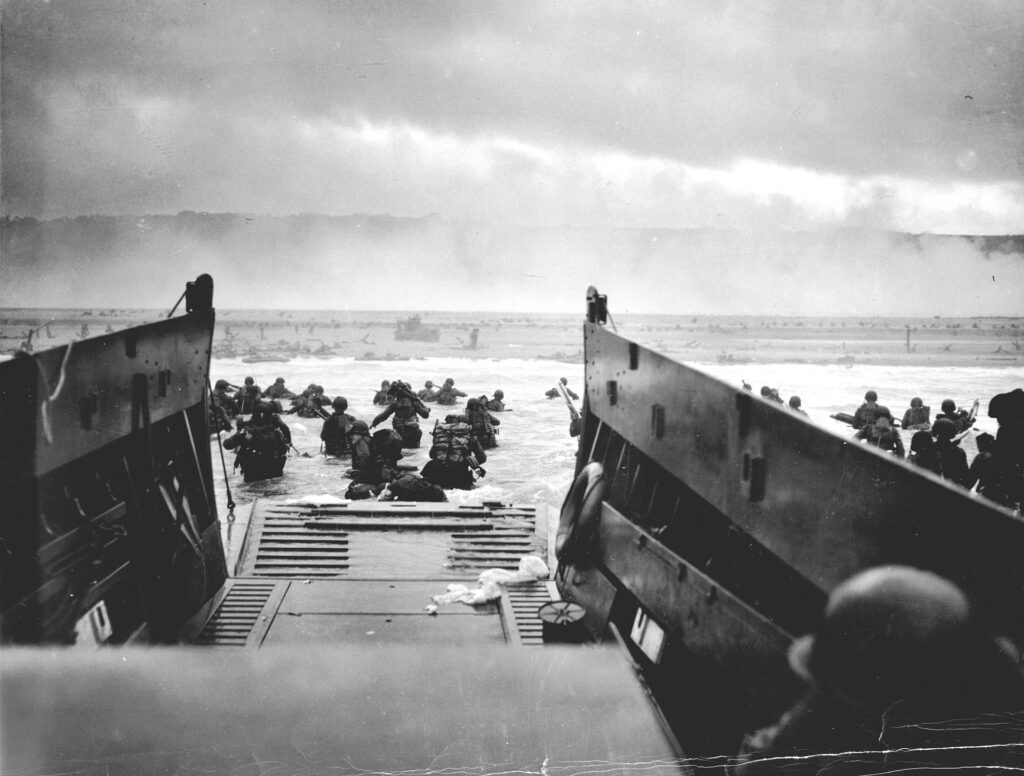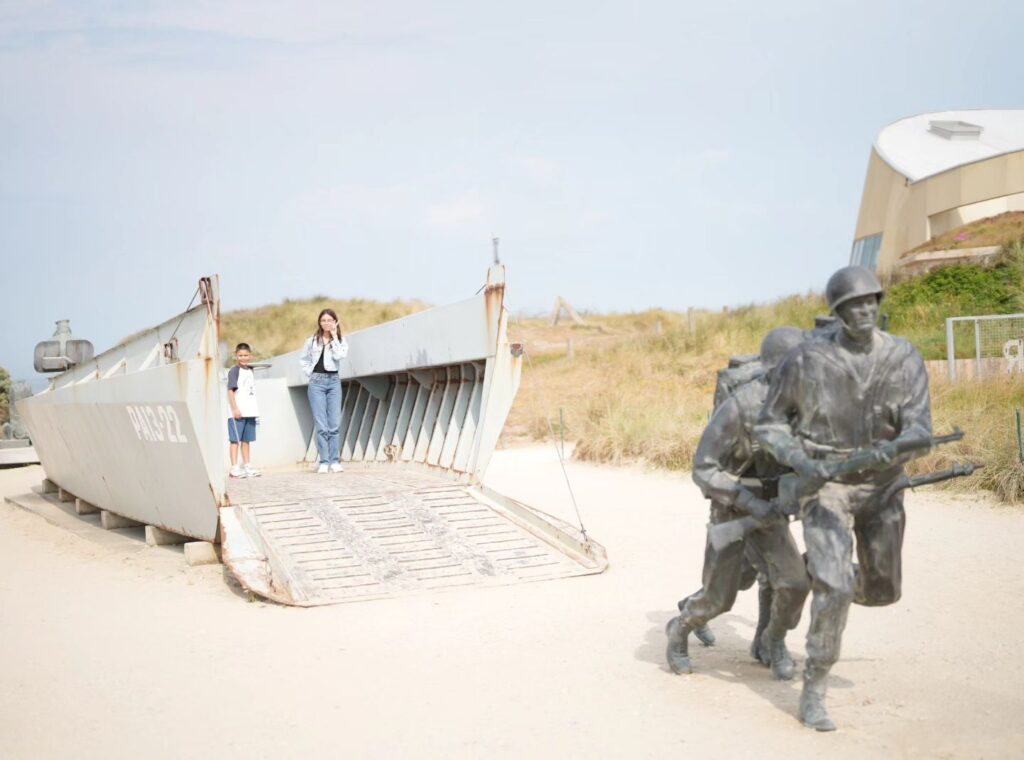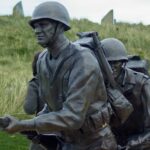Omaha Beach : a must see in Normandy !
During the Second World War, Normandy, a region in northern France, played a pivotal role in the Allied effort to liberate Western Europe from Nazi occupation. The German occupation of Normandy in 1940 led to the fortification of the region with coastal defenses and a brutal regime. However, Normandy would become the epicenter of the Allied invasion, as Operation Overlord, the largest amphibious assault in history, unfolded on June 6, 1944. Codenamed D-Day, this operation saw American, British, Canadian, and other Allied forces landing on Normandy’s beaches, codenamed Utah, Omaha, Gold, Juno, and Sword. While Omaha Beach witnessed intense German resistance and heavy casualties, the Allies ultimately secured their objectives. The Battle of Normandy continued with the liberation of key cities, like Caen, and the encirclement of German forces in the Falaise Pocket. The success of these operations and the eventual liberation of Paris marked a significant turning point in the war, putting immense pressure on Nazi Germany from both the Western and Eastern fronts and hastening the downfall of the Third Reich. Normandy’s enduring significance lies in its role as a place of historical remembrance, with the Normandy American Cemetery serving as a poignant reminder of the sacrifices made.
Post-war, Normandy embarked on a path of post-war reconstruction, recovering from the scars of the conflict and contributing to the broader efforts of rebuilding Europe. Normandy’s history during the Second World War stands as a symbol of courage, sacrifice, and the determination to defeat tyranny. It continues to be a place of historical significance and international remembrance, where museums, memorials, and guided tours offer a comprehensive understanding of the events that transpired during this critical period. Normandy’s legacy is one of bravery, resilience, and the enduring commitment to preserving the memory of those who fought for freedom and the eventual liberation of Western Europe from Nazi oppression.
Omaha Beach : book your Tour with a specialist !
The D-Day landing in Normandy

The D-Day landings in Normandy on June 6, 1944, marked one of the most significant and daring military operations in history during World War II. Codenamed Operation Overlord, this massive amphibious assault was a turning point in the war. Allied forces, primarily from the United States, the United Kingdom, Canada, and other nations, launched the operation to liberate Western Europe from Nazi occupation.
The operation began in the early morning hours as thousands of paratroopers were dropped behind enemy lines to disrupt German defenses and secure key bridges and roadways. Simultaneously, on the Normandy coast, Allied troops stormed the beaches codenamed Utah, Omaha, Gold, Juno, and Sword. While the landings at Utah and Sword Beaches saw relatively lighter resistance, Omaha Beach, in particular, faced fierce German opposition, resulting in heavy casualties. Despite the challenges, the Allies managed to secure their beachheads, establishing a foothold on continental Europe.
The success of D-Day paved the way for the liberation of France and Western Europe. The Battle of Normandy ensued, marked by intense fighting, the capture of key cities like Caen, and the encirclement of German forces in the Falaise Pocket. The liberation of Paris in August 1944 signaled the beginning of the end of Nazi occupation in France. D-Day’s impact was profound, applying immense pressure on Nazi Germany from both the Western and Eastern fronts and hastening the collapse of the Third Reich. Normandy remains a symbol of courage, sacrifice, and the determination to defeat tyranny, with the Normandy American Cemetery serving as a poignant reminder of the sacrifices made by the Allied forces.
Omaha Beach

Omaha Beach, situated in Normandy, France, gained notoriety during the D-Day landings on June 6, 1944, as part of Operation Overlord in World War II. Codenamed “Omaha,” it was one of the five landing zones where Allied forces, primarily from the United States, embarked on a daring amphibious assault to liberate Western Europe from Nazi occupation.
The Omaha Beach landing was characterized by immense challenges and fierce German resistance. As the American troops approached the shore, they encountered a fortified coastline with well-entrenched German defenses. The assault on Omaha Beach became one of the bloodiest and most difficult aspects of the D-Day operation, as the troops faced withering machine gun fire, artillery barrages, and obstacles on the beach.
Despite suffering heavy casualties, American forces demonstrated remarkable resilience and determination. They eventually managed to secure the beachhead, but not without great sacrifice. Omaha Beach stands as a symbol of the bravery and sacrifice of the soldiers who fought there and the high price paid for the liberation of Europe from Nazi oppression. Today, it is a place of historical remembrance, with memorials and museums honoring the memory of those who served on this iconic beach during World War II.



